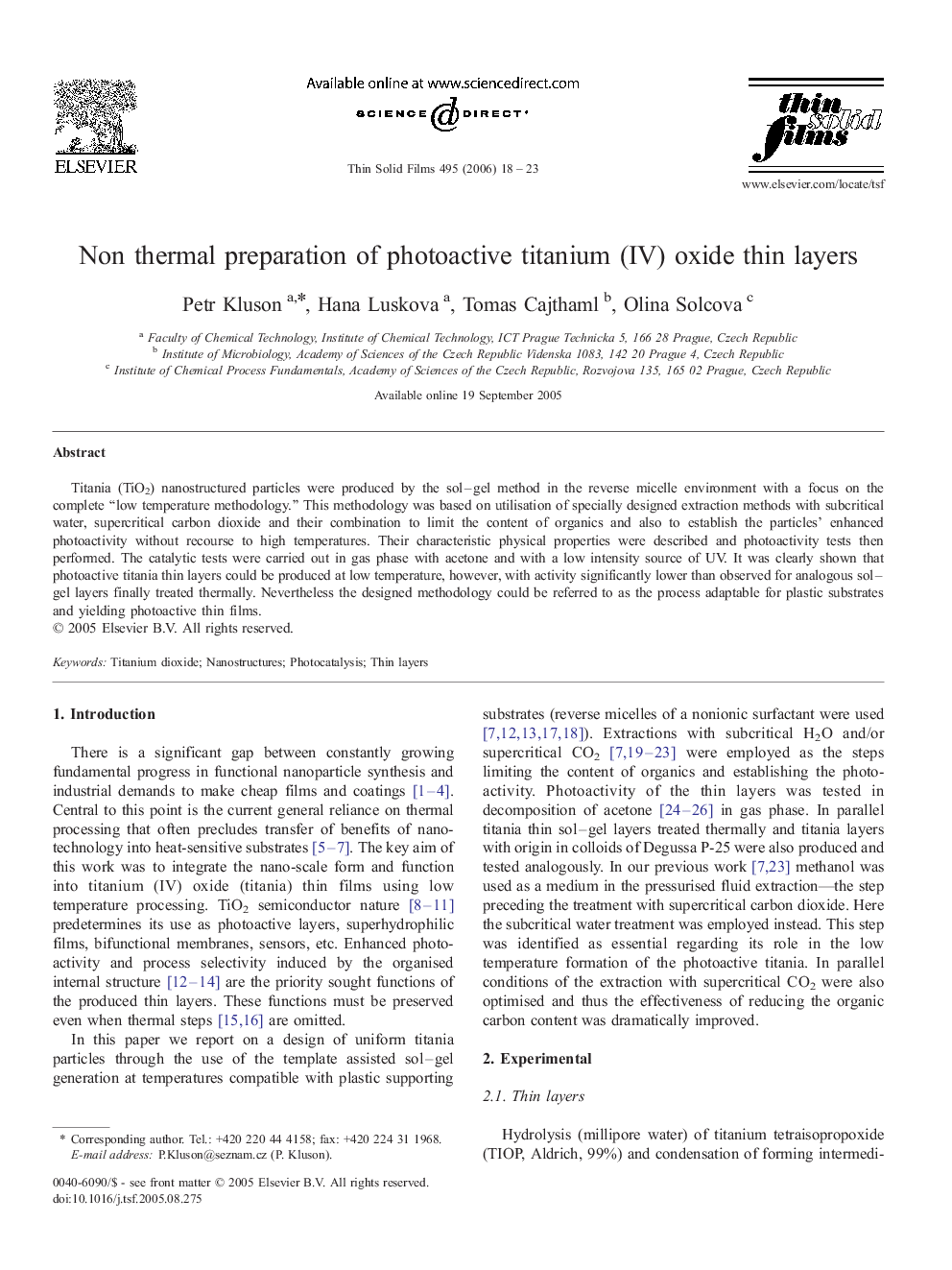| Article ID | Journal | Published Year | Pages | File Type |
|---|---|---|---|---|
| 1676759 | Thin Solid Films | 2006 | 6 Pages |
Titania (TiO2) nanostructured particles were produced by the sol–gel method in the reverse micelle environment with a focus on the complete “low temperature methodology.” This methodology was based on utilisation of specially designed extraction methods with subcritical water, supercritical carbon dioxide and their combination to limit the content of organics and also to establish the particles' enhanced photoactivity without recourse to high temperatures. Their characteristic physical properties were described and photoactivity tests then performed. The catalytic tests were carried out in gas phase with acetone and with a low intensity source of UV. It was clearly shown that photoactive titania thin layers could be produced at low temperature, however, with activity significantly lower than observed for analogous sol–gel layers finally treated thermally. Nevertheless the designed methodology could be referred to as the process adaptable for plastic substrates and yielding photoactive thin films.
